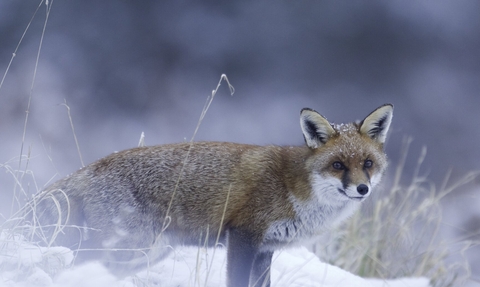
Red Fox (Vulpes vulpes) Vixen in the Snow during winter, Cannock Chase, Staffordshire - Danny Green/2020VISION
Five Christmassy Animals
Which animals spring to mind when you think of Christmas? Here's our pick with some surprising facts about each one.
Robin
The robin has been appearing on our Christmas cards since the practice of sending cards began in the mid-Nineteenth Century. In those days postmen wore red coats and were nicknamed ‘Robins’ or ‘Redbreasts’ so this jolly-looking bird became forever linked with festive greetings.
Robins are plucky birds, staking claim to their territory by singing from prominent perches and driving off any intruders. However, they need all the help they can get to survive winter as they can lose up to 10% of their body weight just staying warm on a single winter’s night. Seed mixes, particularly ones that contain sunflower seeds, provide invaluable energy during the coldest days.
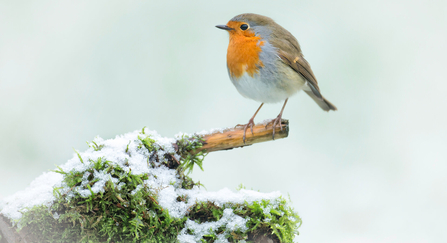
Robin (Erithacus rubecula) - Jon Hawkins
Hare
The much-love brown hare has distinctive long, black-tipped ears and powerful hind legs, and lives on open farmland sheltering in shallow depressions in the ground called 'forms'. If you disturb one, they shoot off at the last-minute running in a zigzag pattern. This athletic animal can reach speeds of 45mph when escaping a predator such as a fox.
Hares are known to 'box' in early spring. Contrary to what you might expect, males aren’t fighting over a female. Instead females are repelling a persistent male attempting to mate. When she’s had enough, she’ll stand on her hind legs and try to fend him off in a fierce boxing match!
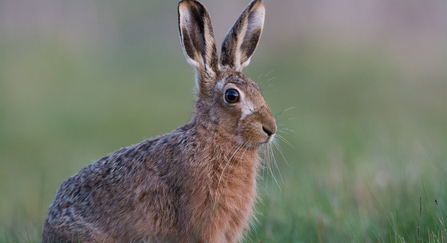
Brown Hare (Lepus europaeus) - Donald Sutherland
Barn Owl
With a snowy white, distinctive heart-shaped face, there’s no mistaking the Barn Owl. Dusk is a good time to catch one sweeping silently over fields as it hunts for prey. Barn owls feed almost entirely on small mammals and, as half of their diet is made up of field voles, the best chance of seeing a barn owl hunting is in areas of rough grassland – a vole's favourite habitat.
Once in decline as their homes in old buildings and barns disappeared, barn owls are now on the increase helped by the introduction of barn owl nesting boxes. Winter is a tough time though as food is generally harder to find at a time when they need it most.
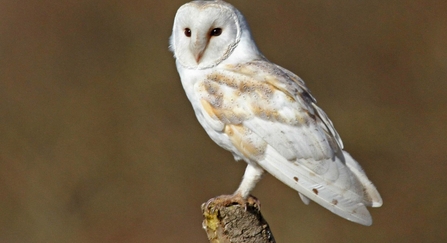
Barn Owl (Tyto alba) - Margaret Holland
Fox
Foxes are born survivors, renowned for their cunning. In fact, they are just opportunistic, surviving in woodlands as well as urban areas, eating a wide variety of food. Rabbits and field voles are common prey, and their diet can include everything from worms and beetles to deer fawns and fruit – and the odd chicken if they’re lucky.
Your best chance of seeing the red coated fox may well be in a town or city, trotting down the road; rural foxes in contrast are rather shy. Foxes live underground in excavated burrows called dens or ‘earths’ and don’t need to hibernate to conserve energy as they can find enough food during the winter.
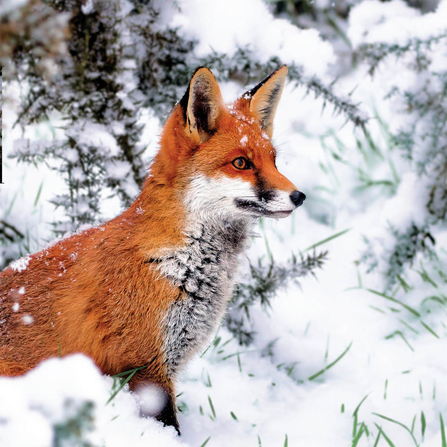
Red Fox (Vulpes vulpes)
Reindeer
Synonymous with Christmas, reindeer are perfectly adapted to extreme cold and snowy conditions. They have splayed feet that spread their weight enabling them to walk over thick snow and the nose has an internal heat-exchange system where each breath is warmed on its way to the lungs and cooled as it is exhaled. Reindeer coat comprises two layers of fur, an ultra-fine and dense underfur, and a shaggy outer layer allowing them to keep warm down to -50oC.
Only female reindeer keep their antlers during winter, helping pregnant reindeer sweep away thick snow and find food. So Father Christmas’s reindeer with their handsome pair of antlers are in fact females. Once native in Scotland, a small herd exists in the Caingorms, Scotland after being re-introduced in 1952.
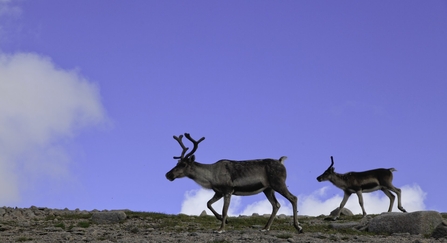
Reindeer (Rangifer tarandus) on upland pleateau of Cairngorm mountains, Cairngorms National Park, Scotland, UK - Mark Hamblin/2020VISION
